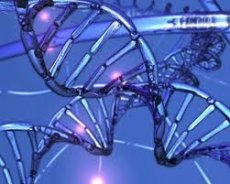Medical expert of the article
New publications
Scientists have created an artificial carrier of genetic information
Last reviewed: 01.07.2025

All iLive content is medically reviewed or fact checked to ensure as much factual accuracy as possible.
We have strict sourcing guidelines and only link to reputable media sites, academic research institutions and, whenever possible, medically peer reviewed studies. Note that the numbers in parentheses ([1], [2], etc.) are clickable links to these studies.
If you feel that any of our content is inaccurate, out-of-date, or otherwise questionable, please select it and press Ctrl + Enter.

An alternative to the natural carriers of genetic information DNA and RNA are xeno nucleic acids (synthesized in the laboratory), which are capable of transmitting genetic information. They can be transformed into various biologically useful forms using “directed evolution” and used as biosensors.
An international group of researchers from the United States, England, Belgium and Denmark published in the journal Science news about molecules they synthesized that have every chance of acting as an alternative to RNA and DNA.
The question of whether such alternatives can exist has long been the subject of much research and fierce debate in the scientific community. One of the authors of the study was John Chapat, a scientist at the Institute of Biosynthesis (Southern Arizona University).
Not long ago, he suggested that one of these alternatives would be threose nucleic acid (threose is one of the simple sugars with the formula C4H8O4).
He has now continued to develop his own experiments as part of a European group working on a more general issue: xeno nucleic acids (XNA), in other words foreign nucleic acids, molecules that do not exist in nature, although in the same way as RNA and DNA, they are capable of storing and transmitting genetic information.
Now, for the first time, this group has demonstrated a set of six such “unnatural” nucleic acid polymers that it has developed.
The creation of xenocreatures on their basis, which is the first thing that comes to mind for correspondents, is still too fantastic and impossible, and researchers, of course, have not even assessed it.
Scientists were satisfied with what can be done with XNA today. It turns out that one of them can be transformed into all sorts of biologically useful forms using “directed evolution.”
Thus, in the laboratory, among other things, so-called nucleic acid aptamers were made, unusual chemical sensors that respond to the appearance of a specific chemical compound. In conventional genetics, they are used, for example, to search for defects in DNA or respond to the appearance of compounds to which they are tuned by turning off the corresponding genes. The xeno-aptamers developed by the group are capable of not only participating in similar genetic actions, they can act like antibodies, finding and binding suitable molecules with the highest efficiency.
John Chapat admits that XNA can be used to create new types of diagnostics and new xeno-biosensors that will be able to work even more efficiently than natural ones, since natural enzyme guards, configured to destroy foreign DNA and RNA, will not notice them.
Experimental xenobiology is a new science that this work has begun, and according to Chepet, will make it possible to create previously unheard of therapeutic methods in the future.
This work on xenonucleic acids provides a probable answer to another interesting question that has tormented all geneticists for decades: how did DNA and RNA originate on Earth.
At the end of the last century, scientists learned that DNA most likely arose after less complex RNA, but they did not understand how RNA, also the most complex molecule, could have been created in nature. Academician A. Spirin, the world's leading expert on RNA, once stated that he had spent 2 years of his life on this issue and learned that random RNA synthesis could have occurred in a time much greater than the lifetime of the entire Universe. The probability of this event is much less than the probability of a monkey writing "War and Peace".
According to one theory, RNA molecules were preceded by even simpler molecules – pre-RNA, but this theory had a large number of inconsistencies, which are removed if we imagine that between pre-RNA and RNA there was another intermediary – some xenogenetic substance – xeno-nucleic acid.
This intermediary, according to Chepet, could absolutely be his beloved threose nucleic acid (TNA).


 [
[